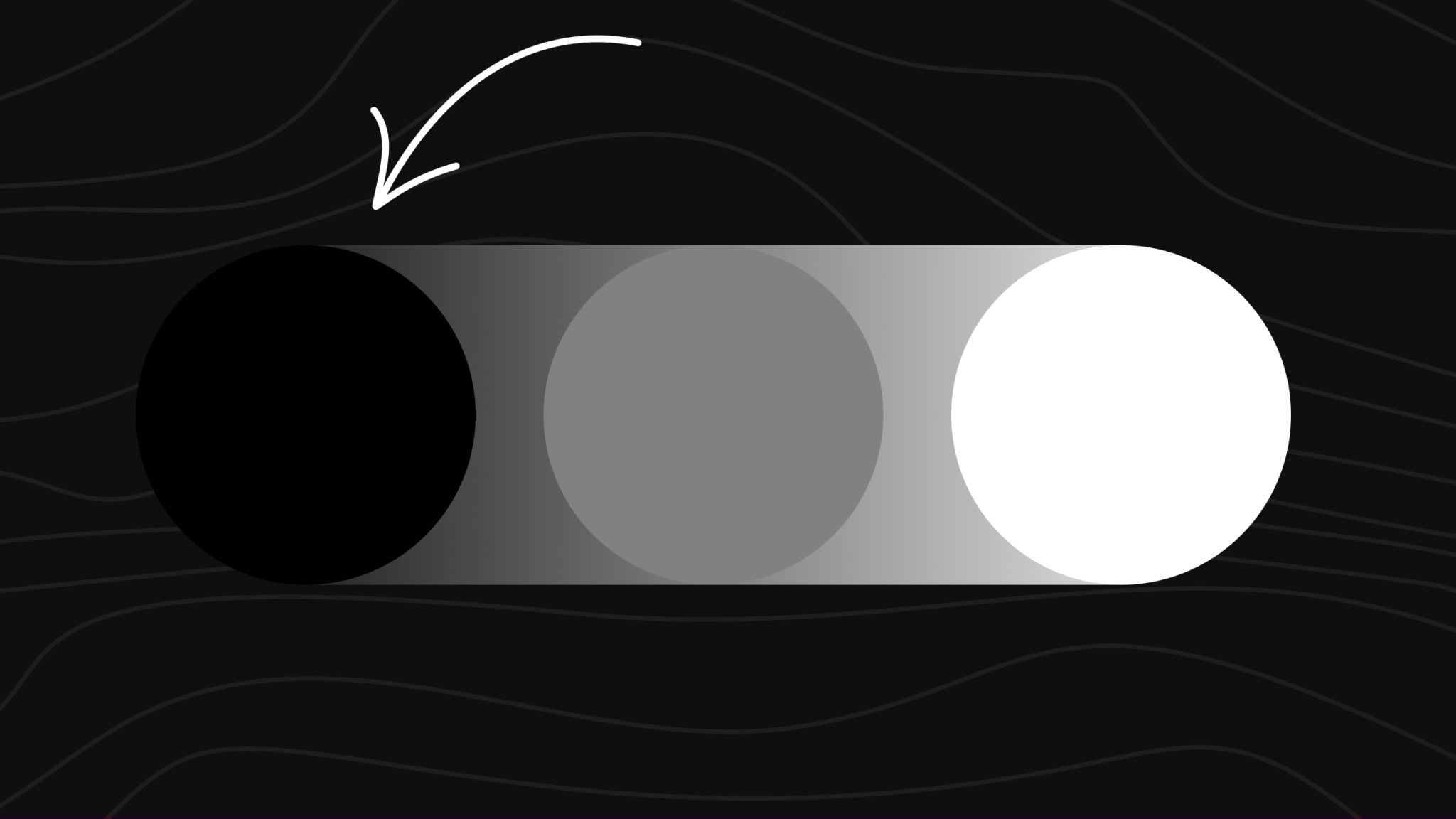A lack of light is what makes anything black. It indicates that all of the pigment has been consumed.
Contrary to popular belief, black does not belong to the color spectrum. If we take a step back and examine color from a purely scientific perspective, we find that each of the visible colors corresponds to a distinct range of light wavelengths. There is no inherent color in inanimate objects; rather, certain wavelengths of light are reflected back to our sight while the remaining ones are absorbed.
Black is unique since it is not a color of the spectrum but rather, as we mentioned, the absence of all visible light. A black surface absorbs all visible light, thus, our eyes see nothing since no light is being reflected back to them. As black paint is made by mixing many different colors, it’s easy to get confused about how this works in your head.
Though you won’t be able to get a perfect black by color mixing, you can still get pretty close! Finding out which colors combine to form your preferred shade of black is part of the excitement of learning how to create black.
What Colors Make Black?
Making black from the other three main colors is the first thing you need to learn. Since you likely already have these colors, this is the quickest and most convenient approach to create black.
You will require the below colors:
- Blue
- Yellow
- Red
To achieve the best outcome, you should combine the colors in a 1:1:1 ratio.
Keep in mind that you must use genuine primary colors in order to create black. It’s best to avoid using any lighter forms of true red or blue.
You should also avoid light yellow. If you use too light of a red and blue, for instance, you’ll probably end up with a brown. If brown is what you’re after, this may help, but that’s not our focus.
As long as you blend just the brightest tone of each primary color, you will be good to go.
Once this part is sorted, you may start to explore a bit. There are several tints that can give different versions of the black color. You need bold hues like yellow ochre, crimson red, and ultramarine blue. These are deep color tones that will help you get black that is true and rich.
When you blend ultramarine blue with crimson red, the result will be a gorgeous purple. Set some away if you believe you will be able to put it to use. To offset this hue, you will have to throw in the yellow ochre. Remember that the mixture still requires equal proportions of each hue to give you the desired result.
What is the Blue-Black Shade?

An interesting skill to have is the ability to create black by mixing basic colors (or tints of those fundamental colors).
However, this is just the start. You can achieve black in several ways besides just mixing the three primary colors together.
A second way to achieve black involves playing about with blue. The other colors you’ll be using will come as a bit of a surprise, but blue was mentioned before as being one component of the colors of black.
To get a brownish black, for instance, you’ll need to combine blue and orange.
For optimal results, you’ll want to obtain really dark versions of these hues, such as pyrrole orange and phthalo blue. Both are saturated versions of their respective colors, thus, by combining them, you may achieve the black you are looking for.
To get a deeper black via the blue route, you’ll need some rather intense color tones. The combination of burnt umber and ultramarine blue is an excellent choice.
It is difficult to pin down exactly what burned umber is, even amongst artists. They may say it’s a dark orange, but others will insist it’s a dark yellow. You’ll find some people who believe it is a kind of dark crimson.
By combining them, you may create a black so deep it will seem like you’ve entered the void. If you give think about it, you will find that the resulting shade of black is actually quite cool. The ultramarine blue is what contributes to this cool, refreshing effect.
Blending yellow with burnt umber and ultramarine blue will give you a black with a greenish tint, like the color you might see if you peered into a dense forest.
To those who wished for a warmer shade of black, we have got you covered as well. This specific shade of black may be achieved by creating a blue base.
You need to get out your ultramarine blue again, but this time you’ll want to combine it with burnt sienna. Burnt sienna is easily distinguished from other reddish-orange tones because of its unique pigmentation. This shade is reminiscent of rusty red clay. It is a lively hue with plenty of potential uses.
Simply combine them in a 1:1 ratio to get your preferred warmer black. Although this is a less intense shade of black, it will still read as rather dark.
Creating Black With a Green Base

The more you play around with different methods of producing black, the more interesting it will get. Knowing how to make black with blue as a starting point, you are now ready to learn how to use the color green to the same effect.
Finding a dark green shade is the key to making it work as a base color. Phthalo green is a deep and luxurious green that works well for this purpose.
Mixing phthalo green with a deep purple yields a striking black color. To get such a deep black, a powerful shade of purple (dioxazine purple, for example) will be required.
Be careful to mix them in a 1:1 ratio to create this inky black. A gothic black aesthetic may be achieved by following this route. To explore other possibilities with this strategy, don’t be afraid to play around with other deep purple tones.
Always ensure that any experimentation with really dark greens, such as phthalo green, results in a black rather than simply a deeper green. Make sure to try each mixture out on a white background. If you feel like the green is still dominating, try adding a touch more purple.
Incorporating a small amount of red into a green foundation is an amusing way to produce black. Once again, darker hues of the component colors will be required, as you cannot create black by combining basic red and green.
Use a deep green color, such phthalo green, as a base. You should also use an intense red like alizarin crimson – this is a bloody and dark color, and can be utilized in a variety of ways.
For a truly dark black, you should combine the two colors in a 1:1 ratio. It is true that this shade is slightly lighter compared to the black resulting from dioxazine purple and phthalo green, but to the naked eye it still seems like a rich, vivid black.
The number of times someone overdoes it with at least one of the two pigments and ends up with a shade that is not quite black is surprisingly high.
Combining it with a quinacridone red is another enjoyable way to play with phthalo green.
It will take some time, but try making sure that the two hues are in a 1:1 ratio. All the labor that you put in will be rewarded in the form of a nice and cool shade of black.
Different Black Shades
Using gradations of black to convey nuanced meaning enhances the effectiveness of storytelling. As you experiment with color combinations, you may already be able to appreciate the vast number of possibilities available to you.
Many people incorrectly assume that black has a single shade. If you look closely enough, you’ll see subtle variations amongst the various blacks.
One of the easiest ways to attain the right black shade is to learn to shift from warmer to cooler tones. We did touch upon this earlier, but this section will help clarify things further.
Cool Black

Learning the difference between warm and cold tones is the first step. Knowing what you know now will make it much simpler to get the desired cold black. Below are the cooler hues that we discussed in the earlier sections:
- Dioxazine Purple
- Phthalo Green
- Ultramarine Blue
Finding the right combination of cold colors to get black can be tricky – especially if you want to go for a deep and dark shade of black. However, with time and practice, your eyes will be able to distinguish between the shades.
Color mixing is a great approach towards learning to identify the subtle differences between shades.
While you are only experimenting with black for now, we recommend going ahead and mixing all types of hues to become an expert at this. There are also plenty of apps and programs that help sharpen color perception.
After you train your eyes, you will be astonished to observe all the colors and shades that were previously unnoticeable to you.
Warm Black

Mixing warm blacks is a lot of fun and often really useful. When you see these shades, they seem closer to you than they really are. This is why painters often employ warm colors for emphasis or to make objects stand out.
Creating warmer blacks is the way to go if you want to employ a black hue in the foreground. Once again, the first step is acquainting yourself with the warmest colors, some of which are:
- Pyrrole Orange
- Quinacridone Red
- Alizarin Crimson
The above shades are just a few examples of warmer tones; however, there are plenty of others out there, such as burnt orange, squash, and rush. The lightness of the resulting black will depend upon the lightness of your chosen warm hue. Make sure to not go too light with the warm color, as you may end up producing a color other than black.
Why Mix Your Own Black?
Though most blacks appear to be the same, you may make a wide range of black tints and tones (as you can with any other color). We think it’s important for every artist to be able to create their own black because of the room for personal expression it provides. While there are artists out there who will claim that creating one’s own black color is too complicated and that you’re better off buying it in a tube, we find that the wide range of possible black tones is a fantastic way to give our artwork a sense of depth and personality.
Now, to be honest, you want to make black paint, you are unlikely to be able to get a precise match by mixing it manually. However, like we mentioned, there is no reason for you to not be able to end up pretty darn close to a genuine black shade. In fact, no store-bought black can compare to the depth and energy of one made from scratch. Your own dark hues can give the image you see in your head a more realistic appearance on the canvas. Blacks can range from very light to quite dark when mixed by hand. Black may be made warmer or colder by altering the proportions of your composite colors.
Wrapping Up
Make use of this guide to come up with stunning black shades. That said, avoid limiting yourself to the palette presented here; there are many more colors to explore.
The most important rule of color mixing, if you are using hues other than the three primary colors, is to use somewhat deeper shades of the colors you choose to experiment with, regardless of whether they are cold or warm.
To learn more about mixing and creating colors, please feel free to check out some of the other blogs on our website.

